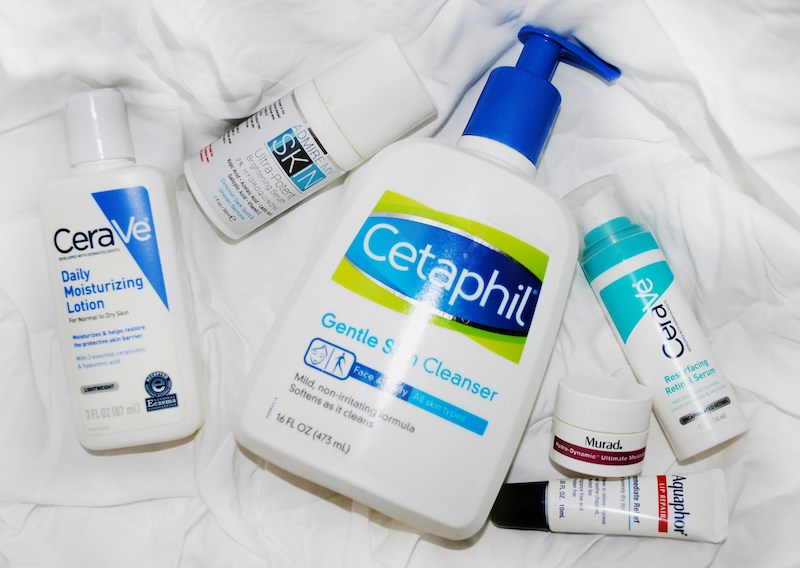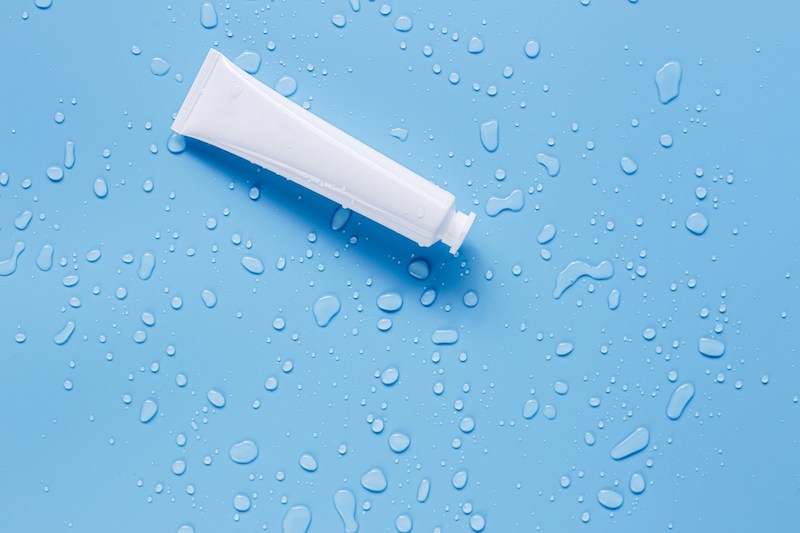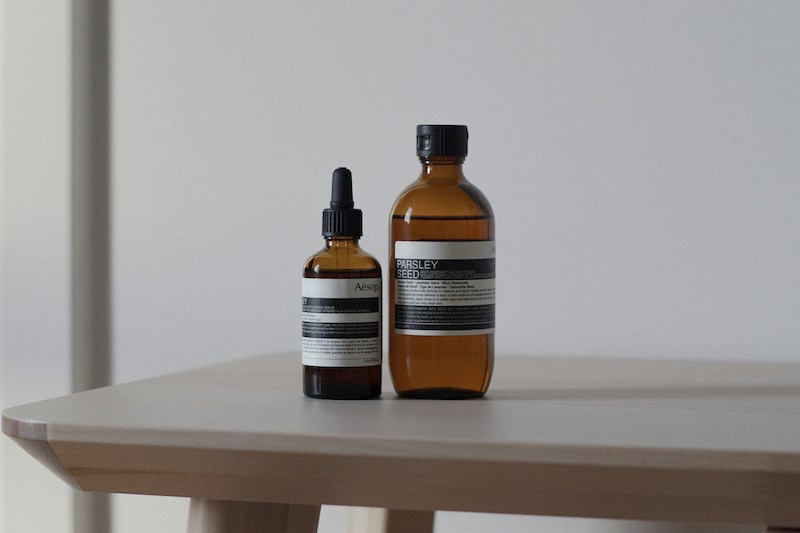Acne is a persistent and often frustrating skin condition that affects millions worldwide. Many turn to over-the-counter treatments in search of a solution, and one product that has gained attention is CeraVe Blemish Control Gel. But does it truly work? And how does it compare to professional-grade treatments?
Today I’ll break down the ingredients, explain how they function in the context of skin health, and determine whether this product is worth your time. Additionally, I’ll suggest alternatives—both budget-friendly and high-end—that may be more effective based on your specific skin needs.
What Is CeraVe Blemish Control Gel?
CeraVe Blemish Control Gel is marketed as a lightweight treatment designed to help clear acne, unclog pores, and prevent breakouts. It is fragrance-free, non-comedogenic, and contains a blend of exfoliating acids and skin-repairing ingredients.
Key Claims:
• Reduces acne and prevents new breakouts
• Helps maintain the skin’s protective barrier
• Gentle yet effective exfoliation
But do these claims hold up under scrutiny?
Ingredients Breakdown
1. Salicylic Acid (BHA) – 2%
Salicylic acid is a beta hydroxy acid (BHA) that penetrates deep into the pores to dissolve excess sebum and exfoliate dead skin cells. The 2% concentration is the maximum allowed in over-the-counter treatments.
- Effectiveness: Salicylic acid is a well-researched acne-fighting ingredient, but its efficacy depends on the pH level. BHAs work best at a pH between 3.0 and 4.0. CeraVe’s Blemish Control Gel has a reported pH of 3.8-4.2, this means the exfoliation may be milder compared to lower pH formulas.
- Who should use it? Ideal for oily and acne-prone skin, particularly those struggling with blackheads and congestion.
- Who should avoid it? If you have dry or sensitive skin, frequent use may cause irritation, peeling, or excessive dryness.
2. Niacinamide (4%)
Niacinamide, or vitamin B3, is a versatile ingredient that reduces inflammation, regulates sebum production, and strengthens the skin barrier. In the context of acne-prone skin, niacinamide can help with redness, post-inflammatory hyperpigmentation, and even mild oil control.- Effectiveness: The 4% concentration in CeraVe’s gel is within the optimal range for anti-inflammatory and brightening effects.
- Who benefits most? Suitable for all skin types, particularly those dealing with redness, sensitivity, or post-acne marks.
- Caution: Niacinamide is generally well-tolerated but should not be paired with high concentrations of vitamin C (ascorbic acid) in the same routine, as it may reduce the effectiveness of both ingredients.
3. Hectorite & Silica
- Function: Oil-absorbing agents that provide a mattifying effect.
- Effectiveness: Helps control shine, but does not treat the root cause of acne.
- Potential Issues: Can cause dryness for people with combination or dry skin.
4. Ceramides (NP, AP, EOP)
- Function: Reinforce the skin barrier and prevent excessive dryness from exfoliation.
- Effectiveness: These ceramides are beneficial, but since they are not the primary ingredients, they might not significantly counterbalance the drying effect of salicylic acid.
- Potential Issues: Works better in richer, occlusive formulations (e.g., creams rather than a gel).
5. Glycolic & Lactic Acid (AHAs)
- Function: Provide surface exfoliation, brightening the skin.
- pH Consideration: AHAs work best at a pH of 3.0–4.0.
- Effectiveness: Can cause irritation when combined with salicylic acid if not formulated correctly. Additionally, mixing multiple acids can be over-exfoliating for some skin types.
6. Alcohol Denat.
- Function: Enhances product absorption and provides a lightweight feel.
- Effectiveness: While alcohol can help active ingredients penetrate better, it also increases dryness and irritation.
- Potential Issues: May compromise the skin barrier over time, making acne worse for sensitive skin.
7. Heptyl Undecylenate
Purpose: An emollient that helps provide a lightweight feel to the product. Does it work? It doesn’t contribute directly to acne treatment but helps improve texture. However, it might not be ideal for oily skin due to its slightly occlusive nature.8. Sodium Hyaluronate
Purpose: Hydration and moisture retention. Does it work? Yes. A derivative of hyaluronic acid, this ingredient helps maintain hydration levels, which is crucial when using exfoliating acids. However, given the gel format, it may not be sufficiently hydrating for those with dry or combination skin.9. Propanediol
Purpose: Enhances penetration of active ingredients and provides a smooth application. Does it work? Yes, but it’s a penetration enhancer, which means it could increase the risk of irritation when paired with strong actives.10. Hydrolyzed Hyaluronic Acid & Hydrolyzed Sodium Hyaluronate
Purpose: Additional hydration support. Does it work? While beneficial, these ingredients are in lower concentrations and may not compensate for the drying effects of salicylic acid.11. Maltodextrin
Purpose: Often used as a stabilizer, but it can be comedogenic in some cases. Does it work? Not particularly beneficial for acne-prone skin and may cause issues for those sensitive to fermentation-derived ingredients.Is the Formulation Well-Balanced?
While the CeraVe Blemish Control Gel contains several beneficial ingredients, there are a few formulation issues:- Potential for irritation: The combination of 2% salicylic acid with a penetration enhancer (propanediol) can be too aggressive for sensitive skin.
- Lack of sufficient soothing agents: The presence of niacinamide and ceramides helps, but the absence of additional anti-inflammatory ingredients like Centella Asiatica or Green Tea Extract is a missed opportunity.
- Hydration may be inadequate: While hyaluronic acid is present, the formulation is gel-based, which may not be hydrating enough for dry skin types.
Who Should Use It?
Best for:
- Oily and acne-prone skin types.
- People struggling with blackheads, whiteheads, or occasional breakouts.
- Those who tolerate salicylic acid well.
Who Should Avoid It?
- Dry or sensitive skin: Alcohol and salicylic acid can be too stripping.
- Rosacea-prone skin: Salicylic acid may trigger flare-ups.
- People using prescription retinoids: Combining too many exfoliating products can cause excessive irritation.
How to Use It in a Routine
Morning Routine:
- Gentle cleanser (avoid exfoliating cleansers)
- Hydrating toner or mist
- Niacinamide or hydrating serum (optional)
- CeraVe Blemish Control Gel (apply a thin layer)
- Oil-free moisturizer
- Sunscreen (SPF 50+)
Evening Routine:
- Gentle cleanser
- Hydrating or calming toner
- CeraVe Blemish Control Gel (if skin tolerates it well, 3–4 times per week)
- Moisturizer with ceramides or peptides
Do NOT combine with:
- Strong vitamin C (L-ascorbic acid) – can cause irritation.
- AHAs (glycolic, lactic acid) – excessive exfoliation.
- Retinol/tretinoin – risk of over-exfoliation and peeling.
- Benzoyl peroxide – may deactivate salicylic acid.
Alternatives to CeraVe Blemish Control Gel
Budget-Friendly Alternatives (Under $20)
- The Ordinary Salicylic Acid 2% Solution – More minimal formula, pH 3.2–3.5 for better exfoliation.
- Paula’s Choice 2% BHA Liquid Exfoliant – Well-formulated with green tea for added soothing benefits.
- Geek & Gorgeous B-Bomb (10% Niacinamide + Zinc) – Better niacinamide alternative without irritating alcohol.
- Naturium BHA Liquid Exfoliant 2% – Gentle but effective.
- Good Molecules Niacinamide Brightening Toner – For those who need oil control without BHAs.
High-End Alternatives ($30–$80)
- SkinCeuticals Blemish + Age Defense – Contains salicylic and dioic acid for effective acne treatment.
- Dr. Dennis Gross Alpha Beta Pore Perfecting & Refining Serum – A premium blend of acids and anti-inflammatory ingredients.
- iS Clinical Active Serum – Potent yet gentle blend of salicylic, glycolic, and kojic acid.
- Sunday Riley UFO Ultra-Clarifying Face Oil – Includes salicylic acid in a nourishing oil base.
- Murad Outsmart Acne Clarifying Treatment – Combines BHA, AHA, and hydrators for balance.
Is CeraVe Blemish Control Gel Worth It?
Pros:- Affordable and accessible.
- Contains effective acne-fighting ingredients.
- Lightweight and non-greasy.
- Contains alcohol, which may cause irritation.
- Salicylic acid may not be optimally formulated for best exfoliation.
- Better alternatives exist for similar or slightly higher prices.
Additional Consideration: Long-Term Use and Side Effects
While short-term use of CeraVe Blemish Control Gel may help with mild breakouts, long-term daily use could lead to barrier damage if not paired with sufficient hydration. Users should monitor their skin for signs of over-exfoliation, including redness, flakiness, and increased sensitivity. If these occur, reducing frequency and incorporating a barrier-repairing product (such as La Roche-Posay Cicaplast Baume B5 or Avene Cicalfate) is recommended.Recommendation
While CeraVe’s Blemish Control Gel contains effective acne-fighting ingredients, the formulation has some flaws, such as a lack of strong soothing agents and potential for irritation. There are better options available at both budget and high-end price points that provide the same benefits without the drawbacks. If you have oily, resilient skin and need a drugstore BHA option, it’s decent but not the best. For better exfoliation, Paula’s Choice 2% BHA Liquid Exfoliant or SkinCeuticals Blemish + Age Defense are superior choices. If you’re struggling with acne and looking for a personalized routine, check out [How to Find Your Skin Type] and [The Ultimate Guide to Creating Your Personalized Skincare Routine].Additional Considerations & Final Thoughts
When dealing with acne, it’s crucial to have a skincare routine rather than relying on a single product. Some important factors to consider include:- Skin Type: If you’re unsure about your skin type, read my guide on How to Find Your Skin Type to ensure you choose products that suit your needs.
- Consistency: Acne treatments take time. Give products at least 6-8 weeks before evaluating results.
- SPF is a Must: If you’re using exfoliants like salicylic acid, always wear sunscreen to prevent irritation and hyperpigmentation.
- Less is More: Overloading your skin with too many actives can disrupt your barrier. Read The Ultimate Guide to Creating Your Personalized Skincare Routine to learn how to layer products correctly.




